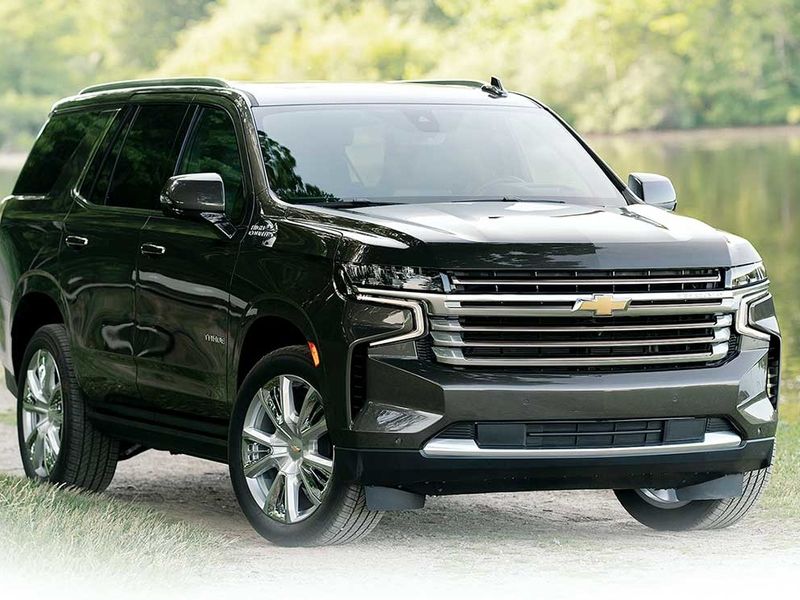
DETROIT — Redesigned Chevrolet Tahoes and Suburbans are making their way to dealerships just as General Motors could use a boost to its bottom line and many of its retailers have run low on inventory during the pandemic.
“Next to the pickup trucks, [large SUVs] generate the highest profits for General Motors, which it desperately needs right now as we hopefully come out of the pandemic and to provide money to invest in future products and future technologies,” said Michelle Krebs, executive analyst at Autotrader.
Production of the redesigned 2021 Tahoe and Suburban started in June, shortly after GM’s eight-week shutdown of North American production. GM retooled the Arlington, Texas, plant that builds its large SUVs during the closure. The company began shipping Tahoes to dealerships in June and Suburbans in late July.
The Tahoe and Suburban are two of GM’s most lucrative and oldest nameplates. The profits they generate are helping fund GM’s investment in electric vehicles.
The SUVs face increased competition from Ford and Jeep. Sales of the redesigned Ford Expedition and Lincoln Navigator climbed last year, and Jeep will reintroduce the Grand Wagoneer in 2021.
But the Tahoe and Suburban’s enduring status in the industry will keep sales strong, said Bob Krapes, Chevy’s truck marketing director. The Suburban is the industry’s longest-running nameplate at 85 years, and the Tahoe has been on the market for 25 years.
“With those two together, we have great loyalists of Chevy customers,” Krapes said.
To tap into that base, the brand is helping dealers connect with previous Tahoe and Suburban buyers. Chevy also plans to expand its marketing approach with mass media, digital efforts, social media and more. Through July, Chevy already had sold 3,000 Tahoes, with the top two trim levels — High Country and Premier — accounting for half of those sales, Krapes said.
Long term, Chevy expects the top two trims to make up about a quarter of sales for the Tahoe and Suburban combined. The base LS is expected to be less than 10 percent of volume, while penetration of the three midlevel varieties — Z71, LT and RST — will depend on the market. Starting prices range from $49,995 for the Tahoe LS to $73,295 for the Suburban High Country.
Chevy is emphasizing the vehicles’ upscale features, including a standard 10-inch central touch screen, an available 15-inch head-up display and an optional pair of 12.6-inch rear-seat media screens. Customers can use a built-in Wi-Fi hot spot with a data subscription, and all models except the LS offer wireless phone charging.
The recession will drive lower-income buyers out of the market, but high earners will continue to shop, Krebs said. “They’re still looking for value, so vehicles packed with a lot of features and technology and are SUVs should do well,” she said.
GM had to complete production of the previous generation of Tahoe and Suburban at Arlington Assembly while GM’s other North American plants were closed to reduce the spread of the coronavirus. As workers who volunteered for the assignment finished the buildout, they helped develop health and safety protocols that GM implemented nationwide when the plants reopened.
“We were able to come online sooner than we thought. We’ve had great success with the protocols put in place there,” said Jim Danahy, executive chief engineer of Chevy’s full-size trucks and SUVs. “We’re running three shifts six days. … We continue to work with the state and local folks as the pandemic continues to ebb and flow and change. And that’s how we’ve been able to keep up.”
Dealers are clamoring for the SUVs, having coped with tight inventory levels over the past few months.
“It’s important to support their dealers with fresh new products that they can sell easily and for good prices,” Krebs said. “Those are solid, important vehicles for the brand. Fresh and new usually wins.”